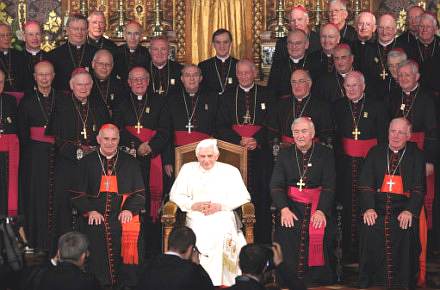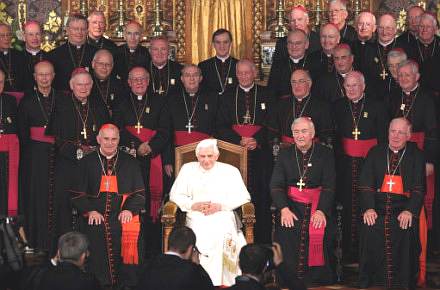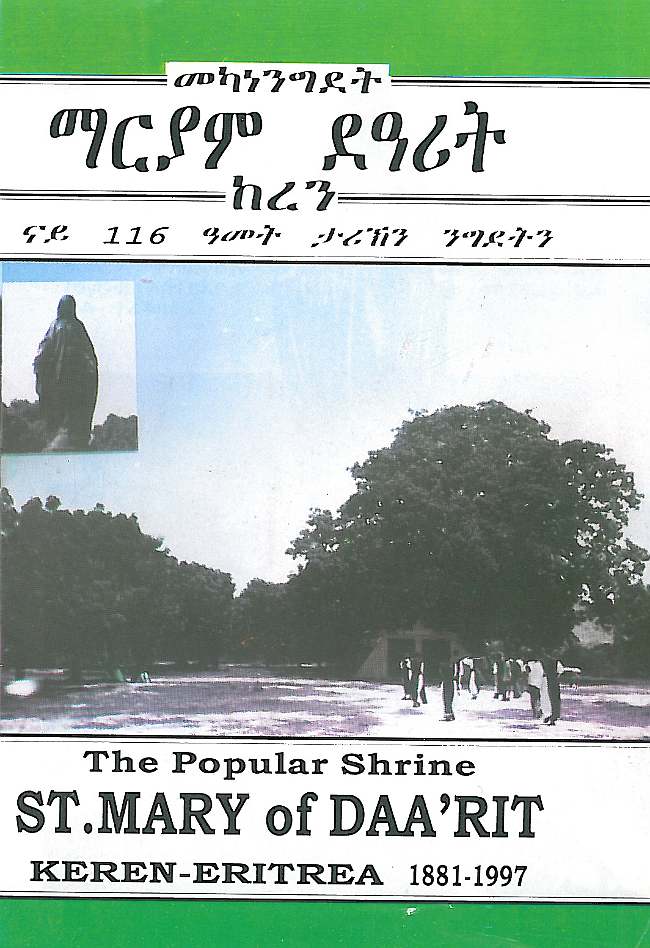Messens regler i dag sier at man helst skal bruke hostier fra samme messe i kommunionen, men også Pius XII og Benedikt XIV (1740-58 – les om ham på engelsk) tar også opp dette spørsmålet. Under tar jeg med noen sitater fra Pius XIIs Mediator Dei, der han siterer Benedikt XIV og bl.a. sier:
118. But the desire of Mother Church does not stop here. For since by feasting upon the bread of angels we can by a «sacramental» communion, as we have already said, also become partakers of the sacrifice, she repeats the invitation to all her children individually, «Take and eat. . . Do this in memory of Me» so that «we may continually experience within us the fruit of our redemption» in a more efficacious manner. For this reason the Council of Trent, reechoing, as it were, the invitation of Christ and His immaculate Spouse, has earnestly exhorted «the faithful when they attend Mass to communicate not only by a spiritual communion but also by a sacramental one, so that they may obtain more abundant fruit from this most holy sacrifice.» Moreover, our predecessor of immortal memory, Benedict XIV, wishing to emphasize and throw fuller light upon the truth that the faithful by receiving the Holy Eucharist become partakers of the divine sacrifice itself, praises the devotion of those who, when attending Mass, not only elicit a desire to receive holy communion but also want to be nourished by hosts consecrated during the Mass, even though, as he himself states, they really and truly take part in the sacrifice should they receive a host which has been duly consecrated at a previous Mass. He writes as follows: «And although in addition to those to whom the celebrant gives a portion of the Victim he himself has offered in the Mass, they also participate in the same sacrifice to whom a priest distributes the Blessed Sacrament that has been reserved; however, the Church has not for this reason ever forbidden, nor does she now forbid, a celebrant to satisfy the piety and just request of those who, when present at Mass, want to become partakers of the same sacrifice, because they likewise offer it after their own manner, nay more, she approves of it and desires that it should not be omitted and would reprehend those priests through whose fault and negligence this participation would be denied to the faithful.»
119. May God grant that all accept these invitations of the Church freely and with spontaneity. May He grant that they participate even every day, if possible, in the divine sacrifice, not only in a spiritual manner, but also by reception of the august sacrament, receiving the body of Jesus Christ which has been offered for all to the eternal Father. Arouse Venerable Brethren, in the hearts of those committed to your care, a great and insatiable hunger for Jesus Christ. Under your guidance let the children and youth crowd to the altar rails to offer themselves, their innocence and their works of zeal to the divine Redeemer. Let husbands and wives approach the holy table so that nourished on this food they may learn to make the children entrusted to them conformed to the mind and heart of Jesus Christ.
120. Let the workers be invited to partake of this sustaining and never failing nourishment that it may renew their strength and obtain for their labors an everlasting recompense in heaven; in a word, invite all men of whatever class and compel them to come in; since this is the bread of life which all require. The Church of Jesus Christ needs no other bread than this to satisfy fully our souls’ wants and desires, and to unite us in the most intimate union with Jesus Christ, to make us «one body,» to get us to live together as brothers who, breaking the same bread, sit down to the same heavenly table, to partake of the elixir of immortality.
121. Now it is very fitting, as the liturgy otherwise lays down, that the people receive holy communion after the priest has partaken of the divine repast upon the altar; and, as we have written above, they should be commended who, when present at Mass, receive hosts consecrated at the same Mass, so that it is actually verified, «that as many of us, as, at this altar, shall partake of and receive the most holy body and blood of thy Son, may be filled with every heavenly blessing and grace.»
122. Still sometimes there may be a reason, and that not infrequently, why holy communion should be distributed before or after Mass and even immediately after the priest receives the sacred species – and even though hosts consecrated at a previous Mass should be used. In these circumstances – as we have stated above – the people duly take part in the eucharistic sacrifice and not seldom they can in this way more conveniently receive holy communion. Still, though the Church with the kind heart of a mother strives to meet the spiritual needs of her children, they, for their part, should not readily neglect the directions of the liturgy and, as often as there is no reasonable difficulty, should aim that all their actions at the altar manifest more clearly the living unity of the Mystical Body. …


 William Oddie nevnte også i
William Oddie nevnte også i

 The most prominent site is the shrine of St. Mary of Da’arit popularly known as Mariam Da’arit (Madonna of the Baobab), about 2.3km to the north. The shrine is inside a large Baobab grotto, which was inaugurated by the fifth Vicar Apostolic Msgr. Touvier on July 18, 1881. Gradually “Mariam Da’arit” has become a popular open-air shrine, a sign of unity and religious devotion. Today the shrine encompasses an area of over 10 hectares where oranges, guavas are grown in orchards. On 29 May every year, there’s pilgrimage to the site, and hundreds of people congregate to dance and sing.
The most prominent site is the shrine of St. Mary of Da’arit popularly known as Mariam Da’arit (Madonna of the Baobab), about 2.3km to the north. The shrine is inside a large Baobab grotto, which was inaugurated by the fifth Vicar Apostolic Msgr. Touvier on July 18, 1881. Gradually “Mariam Da’arit” has become a popular open-air shrine, a sign of unity and religious devotion. Today the shrine encompasses an area of over 10 hectares where oranges, guavas are grown in orchards. On 29 May every year, there’s pilgrimage to the site, and hundreds of people congregate to dance and sing.